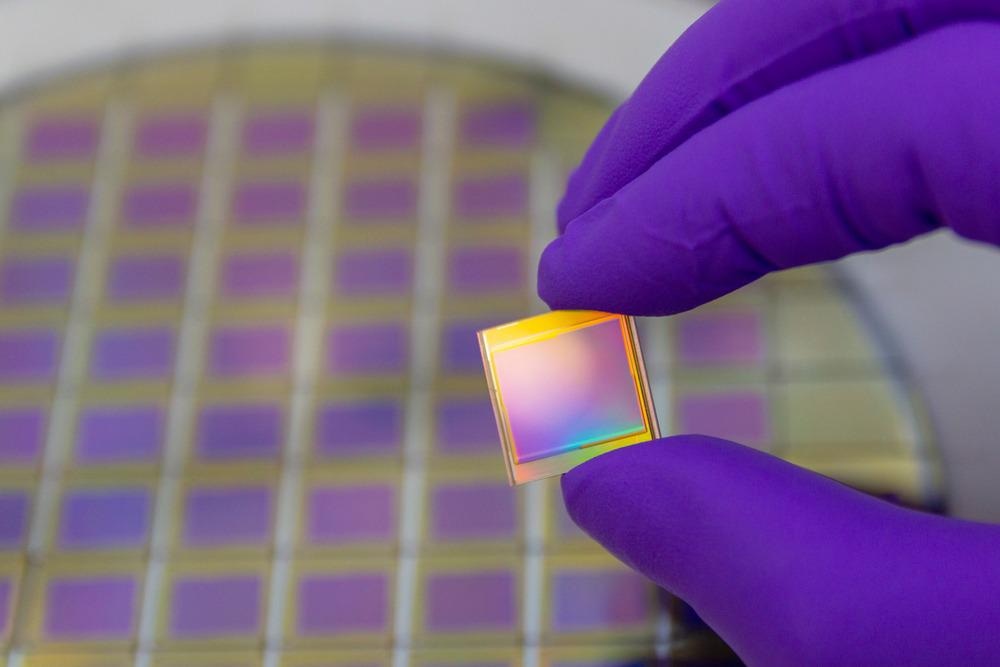May 20 2021
Light waves largely govern the sustained growth of cellular and wireless data traffic. Microwave photonics can be defined as the field of technology that is devoted to the processing and distribution of electrical data signals through optical ways.

Image Credit: Morozov Anatoly/Shutterstock.com
Microwave photonic systems, unlike conventional solutions based only on electronics, can manage large volumes of information. Hence, microwave photonics has turned out to be progressively significant not only as part of 5G cellular networks but also much further.
The main task of microwave photonics is the achievement of narrowband filters: that is, the selection of particular data, at particular frequencies, out of enormous volumes that are transmitted over light.
Several microwave photonic systems are made of long optical fiber paths and separate, discrete parts. But the size, cost, power usage, and production volume needs of sophisticated networks demand next-generation microwave photonic systems that are achieved on a chip. In this context, integrated microwave photonic filters, specifically in silicon, are much sought after.
But there is an underlying challenge: In narrowband filters, signals should be delayed for relatively long durations as part of their processing.
Since the speed of light is so fast, we run out of chip space before the necessary delays are accommodated. The required delays may reach over 100 nanoseconds. Such delays may appear to be short considering daily experience, however, the optical paths that support them are over ten meters long! We cannot possibly fit such long paths as part of a silicon chip.
Avi Zadok, Professor, Bar-Ilan University
“Even if we could somehow fold over that many meters in a certain layout, the extent of optical power losses to go along with it would be prohibitive,” Professor Zadok added.
Such extended delays need a different kind of wave—that is, one that travels relatively more gradually. In a research work newly published in the Optica journal, Professor Zadok and his research team from the Faculty of Engineering and Institute of Nanotechnology and Advanced Materials at Bar-Ilan University, and colleagues from the Hebrew University of Jerusalem and Tower Semiconductors, recommended a solution.
The researchers achieved ultra-narrow filters of microwave signals in silicon integrated circuits by collectively bringing ultrasonic and light waves. This concept enables large freedom for filter design.
We’ve learned how to convert the information of interest from the form of light waves to ultrasonic, surface acoustic waves, and then back to optics. The surface acoustic waves travel at a speed that is 100,000 slower. We can accommodate the delays that we need as part of our silicon chip, within less than a millimeter, and with losses that are very reasonable.
Moshe Katzman, Doctoral Student, Bar-Ilan University
For six decades, acoustic waves have served for data processing but their chip-level integration together with light waves has been demonstrated to be quite tricky.
Katzman added, “Over the last decade we have seen landmark demonstrations of how light and ultrasound waves can be brought together on a chip device, to make up excellent microwave photonic filters. However, the platforms used were more specialized. Part of the appeal of the solution is in its simplicity. The fabrication of devices is based on routine protocols of silicon waveguides. We are not doing anything fancy here.”
The realized filters are extremely narrowband—the filter passbands have a spectral width of just 5 MHz.
To achieve narrowband filters, the data-carrying surface acoustic waves are imprinted on the output light wave many times.
The acoustic signal crosses the light path up to 12 times, depending on choice of layout. Each such event imprints a replica of our signal of interest on the optical wave. Due to the slow acoustic speed, these events are separated by long delays. Their overall summation is what makes the filters work.
Maayan Priel, Doctoral Student, Bar-Ilan University
As part of their study, the researchers reported full control over every replica, toward realizing random filter responses.
“The freedom to design the response of the filters is making the most out of the integrated, microwave-photonic platform,” concluded Maayan Priel.
Journal Reference:
Katzman, M., et al. (2021) Surface acoustic microwave photonic filters in standard silicon-on-insulator. Optica. doi.org/10.1364/OPTICA.421050.